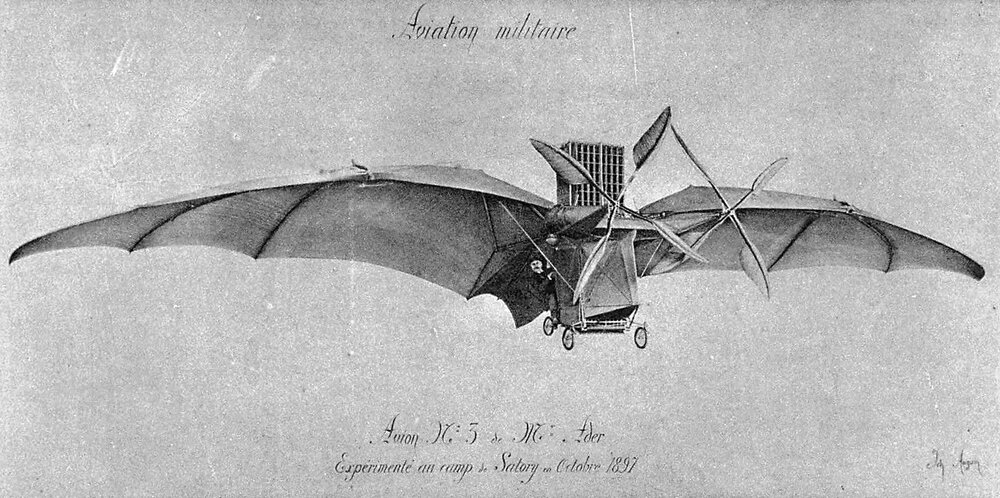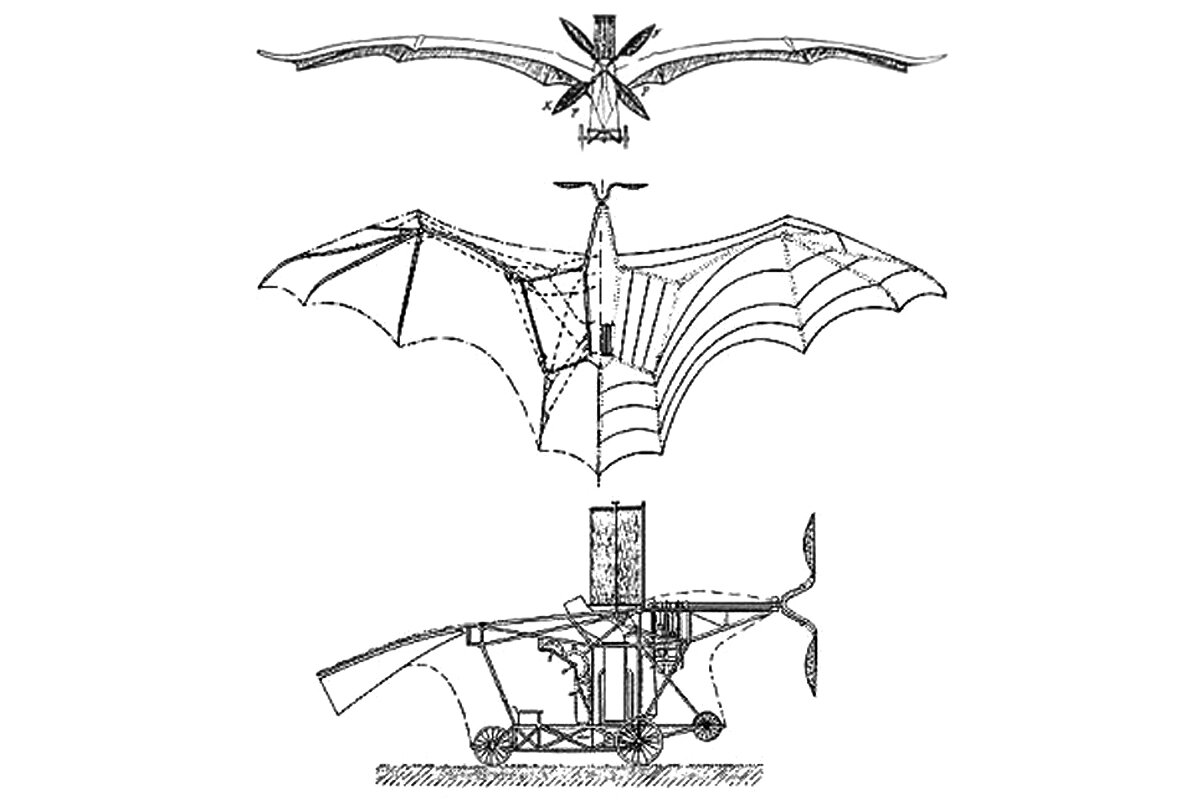Clément Ader's Éole and Avion III
The Avion III, built in 1897 by Clément Ader. Ader claimed the machine flew a distance of 100 m (328 ft), but these claims are unsubstantiated. The wings of the Avion III were based on a bat’s wings.
This is Avion III, an 1897 aircraft designed by Clément Ader. Ader was a French inventor and engineer who became interested in flight after working on electrical communications and gas ballooning for much of his career. This was the second flying machine he designed. It was an updated and improved version of his first design from 1890, the Ader Éole. The Éole was a bat-like winged flying machine with a wingspan of 14 m (46 ft). It was powered by a steam engine, which spun a single propeller at the front of the craft. Though it was a lighter design than a standard steam engine of the time, it was still quite heavy, which made it difficult for the machine to produce enough lift and achieve flight. In addition, the craft lacked directional controls, so the pilot was unable to steer it.
Drawings of the Ader Éole, an aircraft designed by Clément Ader in 1890. The Éole was powered by a steam engine, and Ader claimed to have flown it on multiple occasions in 1890 and 1891. These claims are unsubstantiated, however.
Ader attempted to fly the Éole on 9 Oct 1890, and he achieved a flight of 50 m (165 ft), but his altitude was only about 25 cm (10 in) above the ground. This flight is considered to be the world’s first self-powered takeoff from ground level.[1] Though he barely got off the ground, the machine did indeed raise itself off the ground under it’s own power, which was an amazing feat at the time. Ader later claimed he flew the Éole again and achieved twice the distance, but this claim is unsubstantiated.
Ader’s second design, the Avion III, was built in 1897 with financial support from the French War Office. Avion III had a wingspan of 15 m (48 ft), and featured two propellers, each powered by a steam engine. The wings were similar to the Éole, and still resembled a bat’s wings. Ader claimed to have flown this craft much like the Éole, but these claims are unsubstantiated. He did test out the craft in October 1897, but the French Army withdrew their funding after the tests were unsuccessful.[2]
A Wills’s cigarette card showing Ader’s Avion III in flight. The image is a fantasy, since the craft never flew this high. It’s a remarkable piece of engineering, however, and the wings were inspired by a bat.
After his attempts to fly with Éole and Avion III, Clement went on to write a book on aeronautics, called L'Aviation Militaire. He wouldn’t attempt to fly again, but his pioneering designs for heavier-than-air flying machines are firmly placed within the history of aeronautics. Éole and Avion III’s bat-like wings almost feel inspired by Leonardo da Vinci’s designs for flying machines, so Ader is definitely in historic company with his designs.
Read more about other ideas for flying machines here.
[1]: Crouch, Tom D. “Ader Éole.” Encyclopaedia Britannica. Available at www.britannica.com/.
[2]: Gibbs-Smith, Charles H. "Hops and Flights: A roll call of early powered take-offs". Flight, no. 75 (April 9 1959): 468.



